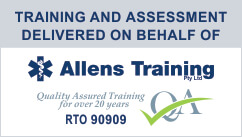Vacation Care – Anaphylaxis – Allergic Reactions
- Minimise the risk of a reaction occurring while the identified child is in the care of the children’s service.
- Provide, as far as practicable, a safe and healthy environment in which children identified as at risk of anaphylaxis can equally program and experiences.
- Actively involve parents/guardians in assessing risks, developing risk minimisation strategies and management strategies for their child.
- Ensure each staff member has
- Facilitate communication to ensure the safety and wellbeing of children at risk of anaphylaxis.
- Raise awareness about allergies and anaphylaxis amongst the service community and children in attendance.
Which end contains the needle?
It is very important that you remember that the black tip contains the needle. You should not touch the black tip with your fingers thumb or hand.
How do I use the EpiPen®?
There are 4 main steps.
- Remove the EpiPen from the yellow or green container by unscrewing the lid and sliding the EpiPen out.
Form a fist around the EpiPen® and pull off grey cap (do not twist). Before pulling off the grey cap you should check that your thumb is closest to the grey cap end, as in the picture, and not over the end of the EpiPen®, especially the black end. This will help prevent you from injecting your own thumb which may happen if you place your thumb over the black ‘active’ end.
- Place black tip against the outer mid-thigh of the child. The mid outer thigh is the ‘fleshiest’ part of the thigh, where the muscle is. (Note; there is no need to ‘swing and jab’) A sudden jab may cause the child to jump and the needle to be discharged before the adrenaline is injected. It is important to hold your child securely while administering the EpiPen®. Your doctor or nurse should show you the best way to do this).
It may be given through light clothing. If the clothing is difficult to remove you should not waste time attempting to do this. - Push HARD until a loud click is heard or felt and hold in place for 10 seconds

- Remove the EpiPen® and place it back in the yellow or green container with the needle pointing down, then call an ambulance. The EpiPen® can only be used once.
If necessary the EpiPen® can be given through clothing. If the clothing is difficult to remove you should not waste time attempting to do this.
What should I do after giving the EpiPen®?
You should always call an ambulance even if the EpiPen® relieves symptoms. Your anaphylaxis action plan provides the phone number. When an EpiPen® has been used the patient should remain under medical observation for at least 4-6 hours after the symptoms have resolved.
Is a further dose of adrenaline ever necessary?
A single dose of EpiPen is all that is required to treat an anaphylactic reaction in the majority of cases. If there is no response to the initial dose of adrenaline, the EpiPen dose can be repeated (if available) after 5 minutes.
For more information on managing allergic reactions and anaphlaxis please book into Simple Instruction’s Apply First Aid Course (formerly called Senior First Aid) to get the appropriate training. Please check the website for upcoming course dates. https://www.simpleinstruction.com.au/contact-us/


